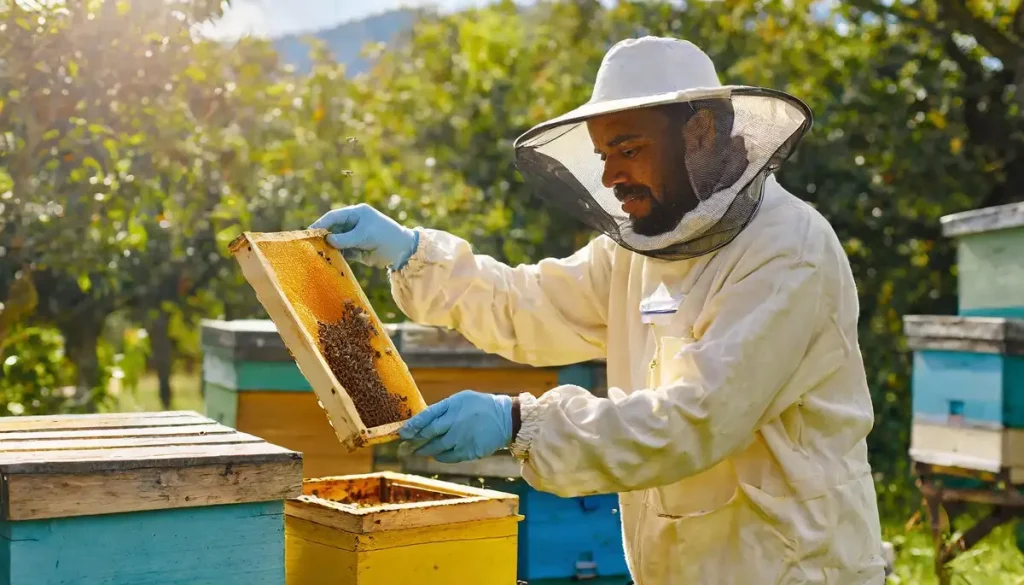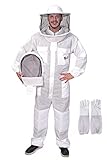Table of Contents
As a beekeeper, your role is to manage the environment that your bees live in and to plan so that the colony can thrive. There are several beekeeping techniques that you need to master to be successful.
Beekeeping techniques will include the following:
- Setting up
- Managing your equipment
- Using tools
- Inspecting the bee colony
- Moving the bees when necessary
- Checking the health of your colony
- Extracting honey
- Preparing for winter (where relevant).
Develop Your Beekeeping Techniques
Part of the joy of being a beekeeper is that there is a wide range of tools to use and seasonal variation in the problems that you will encounter. It is advisable to subscribe to beekeeping publications and to join a local beekeeper society so that you can learn new skills and keep up to date with best practices.
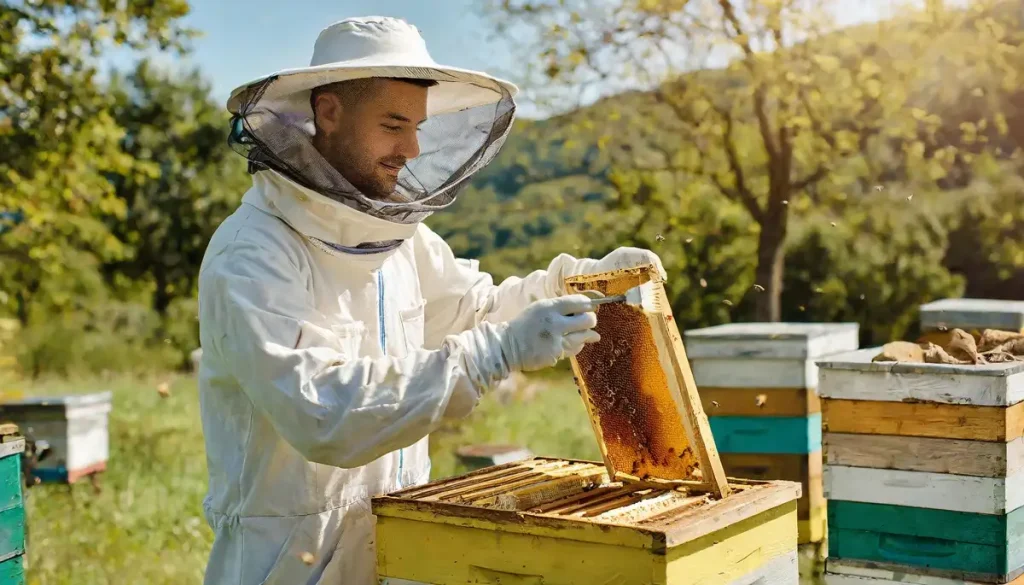
Many beekeepers recommend keeping a journal to record what is going on in your hive(s) and what actions you have taken. This article describes some situations where you need to develop beekeeping techniques, but is not comprehensive.
Setting Up
The new beekeeper needs to plan the area where he/she is going to site the hives. The first consideration should be the impact on neighbors and your family. Plan the direction that the hives will face with care so that you will find it convenient to inspect them. Ideally the hives will be screened from view. You also need to ensure there is a water supply nearby.
What to Wear
Protective clothing is desirable. As well as protecting your face, you should protect your ankles and wrists. Boots are advisable as well as gloves and a veil.
Inspecting Bees
The bee year starts in spring, which is when the queen starts producing more eggs and when young bees are emerging in greater numbers. Observing what the bees are doing is important. During winter you will not have inspected the colony.
To do an inspection, you need a smoker; a couple of puffs at the entrance will encourage guard bees to move inside the hive. You then take off the roof and put it upside down on the ground. Use this for resting the supers that you take off. Make sure the boxes line up but rest them diagonally across the roof.
Checking On The Queen
When you get to the brood box, you need to look for the queen. You are looking for evidence of eggs and the types of cells that the bees are making. You also need to look for evidence of disease. You may need to feed the colony if they do not have enough food.
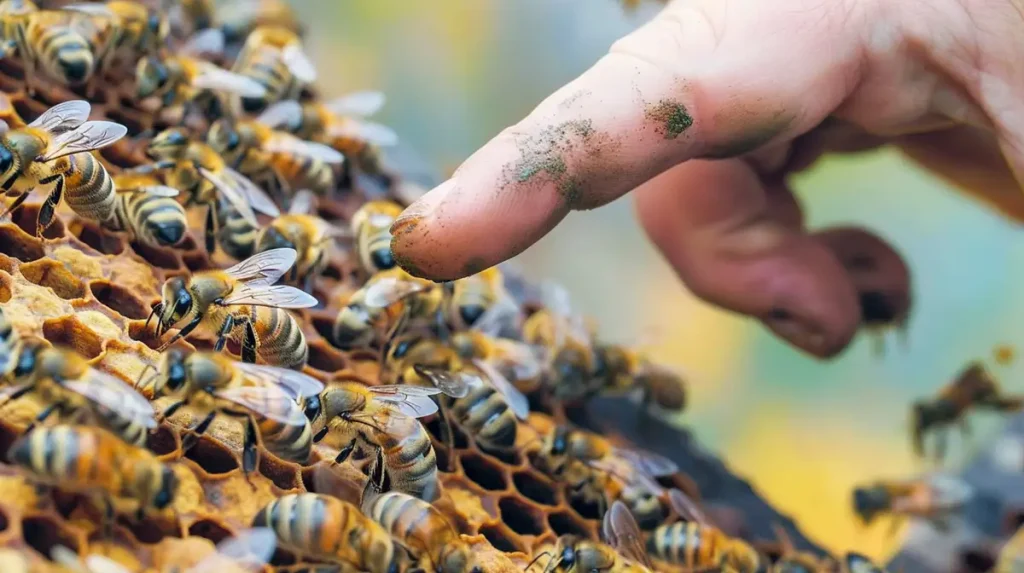
Finding the queen requires a good eye. You are looking for a larger bee; she is likely to be faced by a line of three or four worker bees. The queen can be marked with queen paint when identified. To do this you can use a special comb to trap her.
Getting Your Equipment Ready
As the hive grows, the bees are going to need more room. You need to prepare extra frames and super boxes in advance. Making frames is easy but you need to pay attention to how you assemble the kit. If you are reusing old frames and supers it may be wise to freeze them for at least 24 hours to kill pests such as wax moths.
Manipulating The Hive
The first point of beekeeping technique for working with a hive is never to stand in front of the entrance and to avoid being in the way of the flight path. After smoking, it takes about two minutes for the bees to retreat into the hive so you can inspect it.
- Carter, Anthony (Author)
- English (Publication Language)
- 194 Pages - 02/28/2024 (Publication Date) - Independently published (Publisher)
You need to use a hive tool to separate each box in the hive from the box below and to separate the crown board and the queen excluder. You also need to use the tool to pry the first frame out of the super so it can be inspected. When taking the frame out, hold the lugs with both hands. Drop one side of the frame so it is vertical and inspect by twisting on its axis. The first frame is placed outside the hive after inspection to make the inspection of the other frames easier.
Reading Frames
To improve your beekeeping technique, it can be useful to have someone with more knowledge work with you on inspecting the brood box and give you advice. The things to look out for are:
- sealed brood
- eggs and larvae
- swarming intention
- the physical condition of the comb
- the amount of pollen.
For a beginner, the assessment of these features will take some time. But once you are familiar with what to look for you will be able to assess the condition of the hive in seconds.
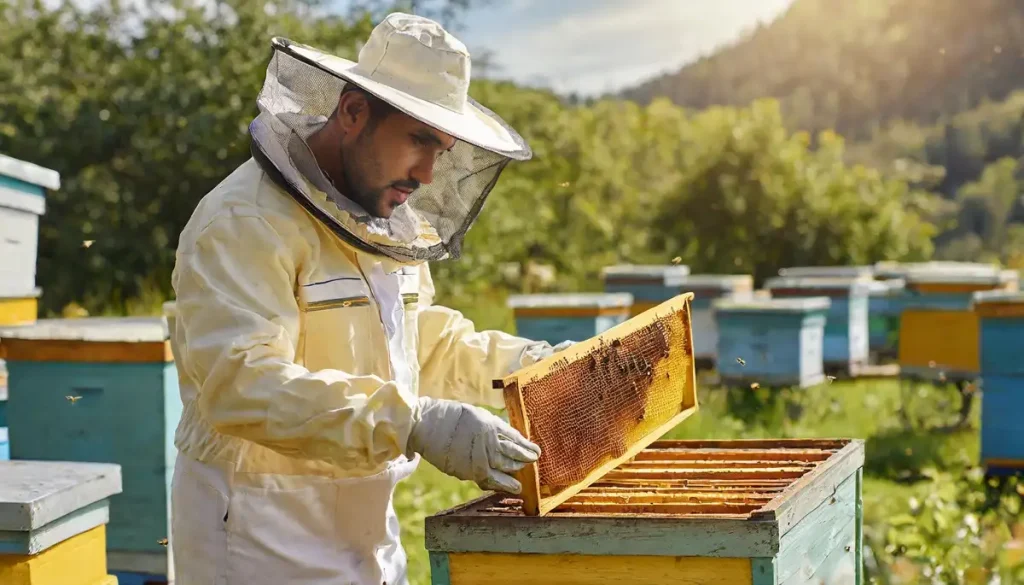
Swarming and Making Another Nucleus
Once you have a lot of bees, there is an opportunity to split the hive in two. This could be because your bees have swarmed. While some beekeepers try to discourage their colonies from swarming (because you will not get much honey from the hive) others see it as an opportunity to gain an extra colony. Look out for queen cups when you inspect your frames and note which frames have them. There are very detailed techniques that you need to use to manage swarms. Beekeepers can also learn how to create artificial swarms to populate an extra hive.
Harvesting The Honey
Of course, the purpose of your beekeeping is to extract honey at the end of the summer, and this requires a range of techniques as you manipulate the supers to remove the bees from the frames that you are going to harvest.
It is important to note that full supers are heavy, so you need to have a good technique for lifting and moving frames to avoid back problems.
Uncapping the frames to extract the honey requires a clean working environment. You must ensure that your jars are sterile, and you have the right equipment ready and in place.
What are Beekeeping Techniques – In Conclusion
In conclusion, beekeeping techniques are crucial for the success of your hive and honey production. Proper management of your bees ensures their health and productivity, while also promoting a healthy environment. This article has provided you with a comprehensive guide to the various techniques involved in beekeeping, including hive management, pest control, feeding, and swarm prevention. With the right knowledge and tools, you can become a successful beekeeper and contribute to the preservation of these valuable pollinators. Start your journey today and discover the joys of beekeeping!
Looking to up your beekeeping game? Check out our latest product recommendations so you can take things to the next level!
Introducing The Top 12 Best Beekeeping Veils For 2024
Introducing The Top 20 Best Beekeeping Gloves For 2024
Introducing The Absolute Best Beekeeping Suits For 2024
The 15 Top Beekeeping Books for 2024
The Top 11 Honey Extractors for 2024
The Top 12 Mason Bee Houses for 2024
Beekeeping Disclaimer:
Beekeeping, like any agricultural activity, involves inherent risks. It is important to understand these risks and take appropriate measures to mitigate them.
Potential risks associated with beekeeping include:
- Bee stings: Honey bees are generally not aggressive but can become defensive if they feel threatened or their hive is disturbed. Bee stings can cause allergic reactions or even anaphylaxis in some individuals, which can be life-threatening. It is important to wear protective clothing and follow best practices when handling bees to minimize the risk of stings.
- Diseases and pests: Bees can be vulnerable to various diseases and pests, including mites, viruses, and bacterial infections. These can have significant impacts on bee colonies, leading to reduced honey production or even colony collapse. It is important to monitor hives regularly and take appropriate measures to prevent and treat diseases and pests.
- Weather conditions: Extreme weather conditions, such as drought or cold temperatures, can affect the health and productivity of bee colonies. It is important to ensure that hives are appropriately sheltered and provided with adequate food and water.
- Environmental hazards: Bees can be affected by environmental hazards such as pesticide exposure, pollution, and habitat loss. It is important to be aware of these hazards and take appropriate measures to protect bee colonies and promote healthy environments for bees.
- Legal requirements: Beekeeping may be subject to local, state, or national regulations, such as registration or inspection requirements. It is important to be aware of these requirements and comply with them.
While beekeeping can be a rewarding and enjoyable activity, it is important to be aware of the potential risks and take appropriate measures to mitigate them. By following best practices and staying informed about the latest developments in beekeeping, beekeepers can help ensure the health and productivity of their hives and contribute to the well-being of bee populations worldwide.
Last update on 2024-04-17 / Affiliate links / Images from Amazon Product Advertising API

